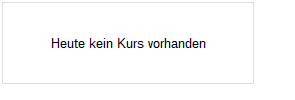
I.M. Skaugen SE (IMSK) : 1H RESULT 2015
IMSK PERFORMANCE 1H 2015
The I.M. Skaugen Group (IMSK) had a negative result for 2Q15 of USD 0.5 mill, compared to a negative of USD 4.6 mill for 1Q15. 1H15 was a negative USD 5.1 mill, compared to a negative result of USD 13.4 mill in 1H14.
EXECUTIVE SUMMARY
The Group's economic performance in 1H15 improved compared to the same period last year as did the performance in 2Q15 compared to 1Q15. The successful divestment of the SPT related activities - the global ship to ship transfer/lightering business, contributed positively and were able to offset unsatisfactory performance of the Norgas Carrier business.
The sale of the SPT related activities will enhance the Group's balance sheet and working capital position and enable the Group to better execute on its LNG strategy. The acquisition of the options to purchase the two LNG carriers Norgas Unikum and Bahrain Vision will enable us to further develop our small scale LNG activities with enhanced value creation potential for IMSK and our shareholders.
We continue to see the full year effect of the reduction in shore based manpower and thus the associated expenses. Comparing 1H14 to 1H15 we see a cost reduction of more than 30%.
During 2Q15 we continued to do spot LNG voyages in Asia. We loaded LNG from a large conventional LNG import terminal and delivered to a smaller LNG hub for onward distribution with trucks and via pipeline. Our vessel design with an extra upper manifold enables loading from conventional large scale LNG terminals without any extra modifications needed to the terminal. These voyages do also confirm that our Multigas vessels can earn a premium when in LNG trade compared to the current petrochemical market. We have signed contracts to continue to do LNG spot voyages in Asia in 2H15.
The underlying performance of Norgas Carriers was however unsatisfactory in 1H15. The shortages in supply of the key petrochemical gases; ethylene, propylene and butadiene were the main contributors to the weak 1H15 results. This situation led to reduced demand for sea borne transportation and especially in Asia. These shortages came from further declines in exports volumes from the major producers in the Gulf region and from the now permanent reductions in exports of petrochemicals from Japan and Korea. Historically Japan and Korea have been the main suppliers to China, who now will have import its deficit through long-haul trade. The major part of the Norgas fleet was positioned in Asia in 1H15 since a focus on Asia has been the strategy of the company. Due to this Norgas carriers suffered very high idle time and had an unacceptable performance. We also maintained ships in the Gulf region for contracts of affreightment (COA) clients. The low volumes under these contracts in 2Q15 contributed to the low utilization in 1H15.
While the trade in Asia was subdued we do see more activity in the West of Suez region. During the second quarter we re-positioned additional vessels in our fleet to the trading areas West of Suez targeting new business. With a shortage of repositioning cargo available; this had a negative impact on the result in 2Q15. Following the repositioning of the fleet, our commercial presence West of Suez has been re-enforced. As a result of these active measures taken we are seeing positive effects on utilization of our fleet going into 3Q15.
Although the oil price is lower compared with recent years, volatility is still high and the uncertainty about future prices has had a negative impact on the amount of trade in petrochemicals. However long term - a low oil price in absolute terms should be good for the petrochemicals industry since it will lower production costs and thus lower the price of the end-products (plastic) - stimulating demand.
We now see that many more power plants are actively searching for solutions to use LNG instead of diesel and heavy fuel oil or naphtha as feedstock. Many of these power plants will require sea-borne small scale LNG solutions. This creates a good momentum for projects in the small scale LNG market, especially in Asia where electricity is the prerequisite for economic growth and this will drive the growth in demand for power generating capacity.
By completion of the SPT transaction IMSK reconfirms its focus on its core business activity - managed by Norgas Carriers; to provide logistics solutions for seaborne regional distribution of liquefied gases such as LNG, ethane, petrochemical gases as well as LPG. The company's unique fleet of flexible and state-of-the-art gas carriers makes it well positioned to capitalize on:
- Growing demand for small scale LNG logistics solutions.
- Growing demand for seaborne export of LPG, Petchems and Ethane from the USA.
- A recovery in seaborne export of petrochemicals from Iran following the country's agreement with the P5+1 in July.
- Long-haul trade replacing short haul trade of Petchems to China from the Gulf region and Iran as well from the US, due to structural supply shortages in Asia.
SMALL SCALE LNG
The IMS vision is to provide cost effective and environmentally friendly natural gas based energy to power plants not able to connect to gas pipeline networks. This solution will in the long run replace diesel, naphtha and HFO - all fuels with a more negative environmental foot-print than gas. LNG is the better solution for now, solving the emissions problem at source.
We believe that oil and its derivatives are far too valuable commodities to be used for power generation and heating/cooling purposes as well as transportation. Oil and its derivatives should in the future be used more for petrochemical end-user purposes and for life sciences. For power generation, transportation and cooling/heating there is ample supply of natural gas that can provide a more economical solution than refined products such as diesel, naphtha and heavy fuel oil.
The initial goal is to employ our existing fleet of 6 smaller LNG capable gas carriers, which allows for instant start-up of the LNG projects. Our experience in LNG terminal design and management will also be used to support the development of new projects for LNG distribution to ensure a rapid start-up. After a long period with too little available LNG supply and high prices compared to oil and oil related products, LNG prices have now fallen to a greater extent than the competing oil products. The supply of LNG has also increased to the point where there will now been an extended period where installed LNG supply capacity will outpace LNG demand. After a few years of flat demand, there is still be more than 130 million tons LNG capacity under construction and a further 140 million tons capacity that are likely to take FID in the coming years. This bodes well for LNG supply to the small scale LNG markets of cost effective LNG.
The lower oil price has also made many governments more willing to remove or reduce fuel subsidies and price controls. This again will make the cost of diesel and other oil related feedstock for power plants more expensive and LNG a more attractive alternative.
We now enjoy a viable economic margin between LNG for power generation and diesel, naphtha and HFO. Therefore, the savings on the fuel bill for a power plant will be able to finance the conversion cost of power plants as well as financing receiving terminals and re-gas facilities.
One example of the momentum we see in the small scale LNG market is Indonesia; where electricity is the prerequisite for economic growth and thus driving the demand for power generating capacity. There is currently a number of processes running with the objective to install more than 3,000 MW of gas based power generation capacity in over 40 island based locations. This would imply an LNG demand of more than 2.5 million tons of LNG per year and could require more than 15 small scale LNG vessels over time.
IMS and Norgas long term commitment in shipping and gas transportation has built a leading brand with reputation of trust and service - notably thanks to our integrated corporate model. We have the largest existing small scale LNG fleet with "ships on the water" and can deliver gas in 3-12 months by using our small scale LNG technology we have helped develop, a technology that will be used for the key projects we are pursuing. We have both the hardware (vessels) and the software (know-how) - to execute and execute faster than our competition and reap the benefit for the clients of their savings.
All of these potential longer term LNG contracts, will enable the Company to realize the potential value of our know-how and in the vessels owned and/or controlled by the Company. Such longer term contracts will, if and when completed, enable us to either refinance some of these vessels and/or develop new co-ownership structures. Such employment and structures will not only match local regulations for cabotage, but will also enable us to repay our mortgage debt obligations on these ships as well as repaying IMSK bond debt when due.
PETROCHEMICAL GASES AND LPG
The market for long haul transport of petrochemical gases contracted further in the second quarter. This provided challenging conditions for trade. In spite of demand for products in Asia, the shortage of supply from the Gulf region and Asia led to a reduction in demand for transport, in particularly in the East of Suez region.
Ethylene exports from, the so far dominant GCC region, were curtailed by planned and unplanned shutdowns, shortage of feed-gas and also an increased down-stream usage. In Asia ethylene exports from Japan were reduced due to permanent shut downs. Korea has now started to consume much of their surplus products that used to be exported. Going forward, this structural shortage of ethylene in Asia will necessitate import from either the Gulf region and Iran or the US.
We are starting to see the effect of US shale oil and gas boom on the petrochemical trades. Exports of ethylene from the US Gulf (USG) area were markedly up in the second quarter. The lower feed-stock costs (ethane) and expanding production capacity, provide a solid base for US Gulf based exports of ethylene going forward.
For the same reason (US shale oil and gas), the availability of low cost LPG and propane has led to increased US based propylene production from PDH plants (propylene de-hydrogenation plants, which converts propane to propylene). As a result long haul exports of propylene from the US increased significantly and the 2Q15 export volumes were ahead of what had been exported the previous four quarters.
The current decline in ton-miles for the long haul trade of petrochemicals and especially ethylene has been somewhat compensated by the increased US export of LPG. LPG exports from the US continues to grow and in 2Q15 it had increased more than three-fold compared to beginning of 2013. Even though the exports to Asia will use larger vessel, we see an increased usage of vessels sizes from our segment for the regional trades to the Americas and to Europe. The prospects of future growth in LPG exports from the US is also supported by the increase in export terminal capacity. We will also see the same positive effect on the demand for ton-miles from the emerging exports of ethane from the US. Initially the ethane will be used as feed-stock for petrochemical plants over-seas, but at current price levels (below natural gas in the US), it is also likely that ethane will be used as a general fuel or for power plants. Like for LPG, there is ample export terminal capacity planned for US exports of ethane.
The largest potential game changer on the horizon for the ethylene markets is the lifting of the Iran sanctions which now seem to be very plausible after the agreement reached in July. Iran is not yet an active participant in the export of ethylene, but we do expect the country to resume its position as the largest exporter in the world as sanctions are lifted and trade is eased.
China will probably not be able to build sufficient ethylene capacity to supply its growing downstream capacity and it will have to import the short fall from overseas. Even though they plan large ethylene capacity expansion from CTO (Coal to Olefins) and MTO (Methanol to Olefins) projects, these will be for integrated projects and will not have spare capacity to supply ethylene for the growth in non-integrated plants. We expect further cancellations or delays of such projects due to growing environmental awareness in China. The Asian region will therefore remain structurally short on ethylene capacity after the permanent closures in Japan and expansion of downstream capacities in Korea. With the expected increase in demand, the shortfall in supply is like to increase going forward. In order to meet their demand China and other countries in Asia will have to import increasing amounts of ethylene. This will be long haul sourcing and from the Gulf region, Iran and the US, who all enjoy the benefits of low cost feed-stock.
SUPPLY OF TONNAGE VS DEMAND FOR TRANSPORTATION
The current order book for our market segment (semi-ref/ethylene vessels; 8-23k cbm) has not changed in any material way in 1H15. The only recent changes we have noted are a few delayed deliveries with at least five larger ethylene vessels scheduled for 2015 deliveries that have been pushed into 2016. The order book is expected to add 35% to the current fleet's capacity in cbm terms. More than 80% of the order book capacity are vessels larger than 20k cbm. Currently close to 90% of these larger vessels are occupied in LPG trade and the new builds are likely to follow the same pattern and go into the growing LPG trade out of the USA.
Other non-petrochemical trade like LPG, VCM, ammonia, ethane and LNG is continuing to occupy a larger percentage of the ethylene fleet. The trend is similar for the types of vessels used for US LPG exports where we see a marked increase in the use of vessels 10-14K cbm.
We thus do not currently see the order book in our segment as a threat as most of the ships will enter the growing LPG trades and see it as to be more in line with future demand, which should lead to an improved utilization for the fleet going forward.
AGREEMENTS IN 2Q 2015
IMS completed the closing of the sale of its 50% economic interest in the SPT activities being the global ship to ship transfer/lightering business to Teekay Corporation. Teekay Corporation owned the other half of the business in a JV with IMSK that was established in 2003. Teekay Corp. has sold the business entirely onto Teekay Tankers (TNK). IMSK has in the process also acquired the right to purchase two Multigas type gas carriers of 12,000 cbm, built in 2011 and that are currently on a longer term lease to IMSK from Teekay LNG Partners LP. The sale of the SPT business was made against a consideration of USD 45.5 mill on 100% basis that for our share will constitute a book gain of about USD 7.0 mill for IMSK.
The divestment of our share in the SPT activities will improve the group's balance sheet and net working capital position with approximately USD 21.7 mill, which should enable the company to execute on its small scale LNG strategy.
CORPORATE ACTIVITIES
We have no capex commitments, apart from the planned maintenance of our fleet, and we have no bond debt maturing in 2015.
OUTLOOK
We will continue our strategy to transform the focus of the company from mainly a LPG and Petchem transporter into a company that supplies energy solutions in the form of LNG. Our revenue base will from this gradually change from short term spot and COA business into long term contract business for small scale LNG logistics. Transport of LNG is more demanding than other gas products and will require special ships. The prospective LNG contracts in the energy field are thus more rewarding, both in terms of rates and in terms of duration.
We expect the growing demand in China and Asia for Petchems and the increasing deficit from Asian production will lead to an increased demand for long haul trade of Petchems. Products will be sourced from the two low cost regions; Iran when sanctions are lifted as well as the US. The demand in ton miles for our market segment of vessels will be further supported by the growth in LPG and ethane export from the US.
The unique Norgas fleet of flexible state-of-the-art gas carriers makes the company well positioned to benefit from the expected growth in all these segments of the market.
Responsibility statement
We confirm, to the best of our knowledge, that the condensed set of financial statements for the period 1st January to 30th June 2015 has been prepared in accordance with IAS 34 - Interim Financial Reporting, and gives a true and fair view of the Group's assets, liabilities, financial position and profit or loss as a whole.
We also confirm, to the best of our knowledge, that the interim report includes a fair review of important events that have occurred during the first six months or the financial year and their impact on the condensed set of financial statements, a description of principal risks and uncertainties for the remaining six months of the financial year, and majority related parties transactions
Oslo, 20th August 2015
I.M. Skaugen SE
Board of Directors
I.M. Skaugen SE
If you have any questions, please contact:
Bente Flø, Chief Financial Officer, on telephone +47 23 12 03 00 /+47 91 64 56 08
or by e-mail: bente.flo@skaugen.com.
This press release is also available on the Internet at our website: www.skaugen.com.
I.M. Skaugen SE is a Norway based Marine Transportation Service Company, with a focus on Innovative Maritime Solutions. Our core business activity is to provide logistics solutions for seaborne regional distribution of liquefied gasses such as LNG, petrochemical gases, ethane as well as LPG.
The Skaugen Group of companies currently operates a fleet of 15 advanced gas carriers. In this fleet we have 6 innovative and unique vessels with the capacity to transport LNG in addition to petrochemical gases and LPG. We recruit, train and employ our own team of seafarers.
IMS employs approximately 500 team members globally and with nearly 30 nationalities represented. We manage and operate our activities and service our clients from our offices in Singapore, Oslo and Houston.
The issuer of this announcement warrants that they are solely responsible for the content, accuracy and originality of the information contained therein.
Source: I. M. Skaugen SE via Globenewswire
Mehr Nachrichten zur I.M. Skaugen Aktie kostenlos abonnieren
(Mit der Bestellung akzeptierst du die Datenschutzhinweise)

Hinweis: ARIVA.DE veröffentlicht in dieser Rubrik Analysen, Kolumnen und Nachrichten aus verschiedenen Quellen. Die ARIVA.DE AG ist nicht verantwortlich für Inhalte, die erkennbar von Dritten in den „News“-Bereich dieser Webseite eingestellt worden sind, und macht sich diese nicht zu Eigen. Diese Inhalte sind insbesondere durch eine entsprechende „von“-Kennzeichnung unterhalb der Artikelüberschrift und/oder durch den Link „Um den vollständigen Artikel zu lesen, klicken Sie bitte hier.“ erkennbar; verantwortlich für diese Inhalte ist allein der genannte Dritte.




